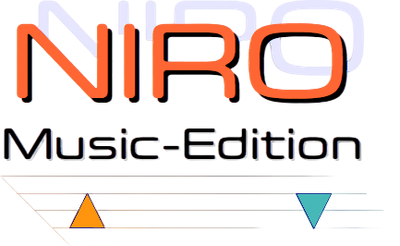Concert for Orchestra/Rohwer
Orchesterkonzert in rhythmisch, minimalistischer Ausprägung. Ruhige Lyrische und melodische Passagen im 2. Satz. Besetzung: Flöte, Oboe, Klarinette in C, Fagott Horn in F, Trompete in C, Posaune, Tuba Klavier. Marimba, Vibraphon, Glockenspiel Xylophon, 3 x Schlagzeug, Pauke 1.- 2. Violine, Viola, Violoncello, Kontrabass Aufführungsdauer ca. 19 min Komplettes Orchestermaterial ISMN Nr.: 979-0-50220-137-1
- Art.Nr.: NME 138
- Versand:
Erfahren Sie mehr
Concert for Orchestra_Note.pdf
1.Satz_cut.mp32.Satz_cut.mp33.Satz_cut.mp3
Das Concert für Orchester ist geprägt durch starke rhythmische und minimalistische Impulse. Die Streichinstrumente spielen hauptsächlich rhythmisch markant und werden durch eine groß besetzte Percussion Sektion dabei Kontrapunktisch-unterstützt. Viele melodische Momente werden durch die Holz und Blechbläser geführt. Das Piano ist ein Bindeglied zwischen der Percussion und den Streichern.
Die drei Sätze haben klassische Tempi, Moderato-Andante-Presto.
Der 1. Satz beginnt mit sehr rhythmisch-tänzerischen Streicherfiguren die auf den Violinen beginnen und bis zum Kontrabass durchgeführt werden. Der Mittelteil führt weiter mit schnellen Pizzicato die in einen lyrisch geprägten Bläserchoral enden. Die darauffolgende minimalistische Piano Sequenz, wird zuerst vom Vibraphon, dann von der Percussion und dann von allen anderen Instrumenten unterstützt und zu einem offenen Ende geführt.
Der 2. Satz hat eine ruhige Stimmung die im Verlauf, durch harmonische Verbindungen
der Streicher und Bläser immer lebendiger wird. Ein kurze Passage, geführt von einer Solo Violine bildet die Transformation zum Ende des Satzes.
Der 3. Satz baut einen Spannungsbogen auf, der zwischen schnellen rhythmischen Streichern und entspannten Phasen die vom Piano und der Percussion Sektion gespielt werden hin und her wechselt
Der Choral im Mittelteil leitet über in den fulminanten Schlusspart der alle Sektionen zusammenführt.
The concert for orchestra is characterized by strong rhythmic and minimalist impulses. The string instruments play mainly rhythmically striking and are supported counterpoint by a large percussion section. Many melodic moments are led through the wood and brass. The piano is a link between the percussion and the strings.
The three movements have classic tempos, Moderato-Andante-Presto.
The first movement begins with very rhythmic-dancing string figures that begin on the violins and continue through to the double bass. The middle part begins with quick pizzicato that ends in a lyrical brass choir. Now following a minimalist piano sequence that first supported by the vibraphone, then by the percussion and then by all other instruments and led to an open ending.
The 2nd movement has a calm mood in the course, through harmonious connections
the strings and winds become more and more alive. A short passage, led by a solo violin, forms the transformation at the end of the movement.
The third movement builds a tension arc that alternates between fast rhythmic strings and relaxed phases played by the piano and the percussion section
The chorale in the middle section leads into the brilliant final part, which brings all the sections together.
